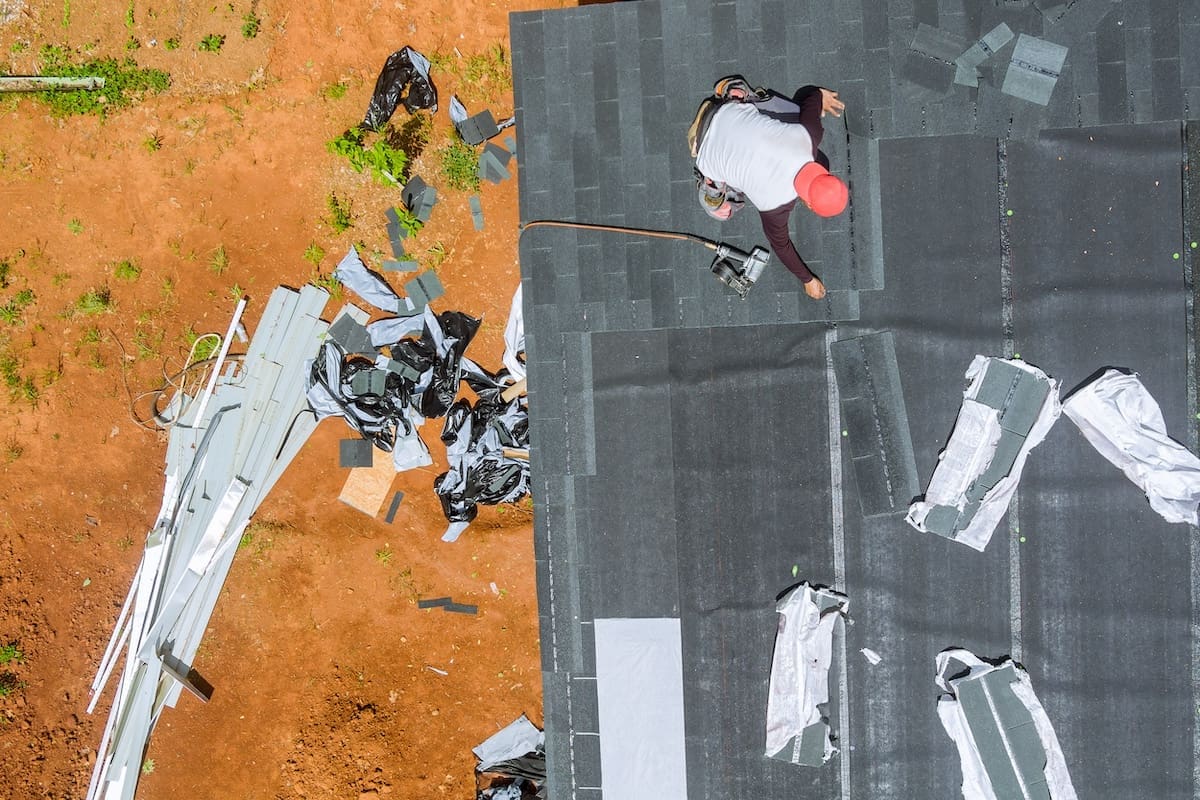When it comes to protecting your home, understanding roofing warranties is essential. Many homeowners find themselves puzzled by the fine print, unsure of what their warranty actually covers. Are you fully protected if your roof starts leaking, or are there hidden exclusions that could leave you footing the bill? This guide aims to clear up the confusion, helping you navigate the complexities of roofing warranties with confidence.
Roofing warranties can vary widely, from manufacturer warranties that cover materials to workmanship warranties that address installation errors. But what do terms like “limited lifetime” really mean, and how can you ensure your warranty remains valid? We’ll explore these questions and more, providing you with the knowledge you need to make informed decisions and maintain peace of mind. Whether you’re dealing with a new roof installation or just want to understand your current coverage better, we’ve got you covered.
Types of Roofing Warranties
Manufacturer Warranties
Manufacturer warranties are the backbone of roofing protection, covering the materials used in your roof. These warranties typically range from 20 to 50 years, depending on the quality and type of materials. For instance, standard roofing shingles often come with a basic limited lifetime warranty, which is the industry standard. However, it’s crucial to understand what these warranties include and exclude to avoid any unpleasant surprises.
Manufacturer warranties generally cover defects in the roofing materials, such as shingles or tiles. This means if the materials fail prematurely due to manufacturing defects, the manufacturer will replace them. However, these warranties often exclude damage caused by improper installation, severe weather events, or lack of maintenance. For example, extreme weather conditions like hail storms, high winds, and hurricanes can cause significant damage to roofing and siding, which may not be covered under a standard manufacturer warranty.
Workmanship Warranties
Workmanship warranties cover the installation process. These warranties are provided by the contractor and ensure that the roof was installed correctly. The duration of workmanship warranties can vary but typically ranges from 2 to 10 years. It’s important to note that these warranties are only as good as the contractor who provides them. Therefore, hiring a reputable and certified contractor is essential to ensure that your workmanship warranty is reliable.
Workmanship warranties cover issues like leaks, improper sealing, and other installation errors. However, they often come with limitations. For instance, if the damage is due to a manufacturer’s defect or severe weather, the workmanship warranty may not apply. Understanding these nuances can help homeowners make informed decisions when choosing a contractor and negotiating warranty terms.
Limited Lifetime Warranties
Limited lifetime warranties are a common offering in the roofing industry, but they can be misleading. The term “limited lifetime” doesn’t mean the roof will last forever. Instead, it typically refers to the expected lifespan of the roofing materials, which can be anywhere from 25 to 30 years. These warranties often come with various conditions and exclusions, so it’s essential to read the fine print.
For example, limited lifetime warranties may be prorated, meaning the coverage decreases over time. In the first few years, you might get full replacement value, but as the roof ages, the warranty might only cover a fraction of the replacement cost. Additionally, these warranties often exclude damage caused by improper maintenance or severe weather events. Understanding the specific terms and conditions of a limited lifetime warranty is crucial for homeowners.
Key Elements to Look For
Coverage Specifics
When evaluating roofing warranties, it’s essential to understand what is covered. Generally, warranties can be divided into two categories: materials and labor. Manufacturer warranties typically cover the materials, while workmanship warranties cover the labor involved in installation. Knowing the difference can help you identify potential gaps in coverage.
- Materials Coverage: Includes defects in shingles, tiles, or other roofing materials.
- Labor Coverage: Covers installation errors and contractor-related issues.
Another critical aspect to consider is whether the warranty is prorated or non-prorated. Prorated warranties decrease in value over time, meaning you’ll receive less coverage as your roof ages. Non-prorated warranties, on the other hand, provide full coverage for the entire warranty period. Understanding these financial implications can help you make a more informed decision.
Transferability
Transferability is another crucial factor to consider, especially if you plan to sell your home. Some warranties can be transferred to a new homeowner, which can significantly impact your property’s value. A transferable warranty can be a strong selling point, offering potential buyers peace of mind knowing that the roof is still under warranty.
However, not all warranties are transferable, and those that are often come with conditions. For example, there might be a fee involved, or the transfer must occur within a specific timeframe. Understanding these terms can help you navigate the process smoothly and ensure that the warranty remains valid after the transfer.
Exclusions and Limitations
Every warranty comes with exclusions and limitations, and understanding these is crucial to avoid unexpected costs. Common exclusions include damage caused by severe weather events, improper maintenance, and unauthorized repairs. For instance, if your roof is damaged by a hurricane, it may not be covered under a standard manufacturer warranty.
Additionally, warranties often require regular maintenance to remain valid. This means you might need to have your roof inspected and maintained periodically, usually every two years. Failure to do so could void your warranty, leaving you unprotected. Understanding these exclusions and limitations can help you take the necessary steps to keep your warranty intact.
Navigating Warranty Claims
Steps to File a Claim
Filing a warranty claim can be a daunting process, but understanding the steps involved can make it smoother. The first step is to conduct a thorough inspection to identify the issue. Once the problem is identified, gather all necessary documentation, including the original warranty, proof of purchase, and any maintenance records.
Next, contact the manufacturer or contractor to initiate the claim. Be prepared to provide detailed information about the issue and any supporting evidence. The manufacturer or contractor will likely send a representative to inspect the roof and verify the claim. If the claim is approved, they will outline the next steps for repair or replacement.
Common Pitfalls
Several common pitfalls can derail a warranty claim. One of the most frequent mistakes is failing to provide adequate documentation. Without proof of purchase or maintenance records, your claim may be denied. Another common issue is not following the proper claim procedure, such as contacting the wrong party or missing deadlines.
To avoid these pitfalls, ensure you keep all relevant documents in a safe place and follow the claim procedure meticulously. Additionally, regular inspections and maintenance can help identify issues early, making it easier to file a claim before the problem worsens.
Role of Regular Inspections
Regular inspections play a crucial role in maintaining your roof and ensuring your warranty remains valid. Most roofing professionals recommend getting your roof inspected at least once every two years. Regular inspections can help identify minor issues before they become major problems, potentially saving you from costly repairs.
Moreover, regular maintenance can affect your warranty validity. Many warranties require periodic inspections and maintenance to remain in effect. By adhering to these requirements, you can ensure that your warranty remains valid and that you’re fully protected in case of issues.
Expert Tips for Maximizing Your Warranty
Choosing the Right Materials and Contractors
Selecting the right materials and contractors is crucial for maximizing your warranty coverage. High-quality materials often come with better warranties, providing more extended coverage and fewer exclusions. When choosing materials, look for those with a proven track record and strong manufacturer warranties.
Equally important is hiring a reputable and certified contractor. A good contractor will not only install your roof correctly but also provide a reliable workmanship warranty. Look for contractors with positive reviews, proper certifications, and a history of quality work. This can ensure that both your materials and installation are covered, giving you comprehensive protection.
Maintaining Your Roof
Regular maintenance is key to keeping your warranty intact and extending the lifespan of your roof. Simple tasks like cleaning gutters, removing debris, and inspecting for damage can go a long way in preventing issues. If you notice any minor problems, address them promptly to avoid voiding your warranty.
When handling minor repairs, it’s essential to follow the manufacturer’s guidelines. Unauthorized repairs can void your warranty, leaving you unprotected. Always use approved materials and methods, and consider hiring a professional for significant repairs to ensure they are done correctly.
Understanding Your Rights
Understanding your rights under warranty laws can empower you to take full advantage of your coverage. Warranty laws vary by state, but they generally protect homeowners from unfair practices and ensure that warranties are honored. If you encounter issues with your warranty, don’t hesitate to seek professional advice or legal help.
Knowing your rights can also help you navigate the warranty process more effectively. For instance, if a manufacturer or contractor denies a valid claim, you may have legal recourse. By understanding your rights and the warranty terms, you can ensure that you’re fully protected and can address any issues that arise.
By focusing on these key areas, homeowners can navigate the complexities of roofing warranties with confidence. Understanding the different types of warranties, key elements to look for, and how to navigate claims can provide peace of mind and long-term protection for your home.
Wrapping It Up: Roofing Warranties Demystified
Understanding roofing warranties is crucial for protecting your home and avoiding unexpected costs. From manufacturer warranties covering material defects to workmanship warranties addressing installation errors, knowing what each type covers can save you from unpleasant surprises. Limited lifetime warranties, while common, often come with conditions and exclusions that need careful consideration. By focusing on key elements like coverage specifics, transferability, and regular inspections, you can ensure your warranty remains valid and provides the protection you need.
Choosing high-quality materials and reputable contractors, maintaining your roof diligently, and understanding your rights under warranty laws are essential steps in maximizing your warranty coverage. With this knowledge, you can navigate the complexities of roofing warranties confidently, ensuring long-term protection for your home. Remember, a well-maintained roof isn’t just a shield against the elements—it’s an investment in your peace of mind. Take the time to understand your warranty fully, and you’ll be better prepared to handle any issues that arise. After all, a roof over your head should be a source of security, not stress.







